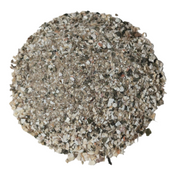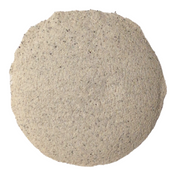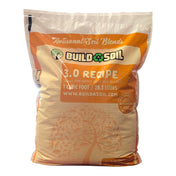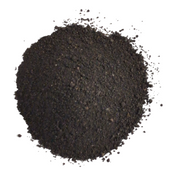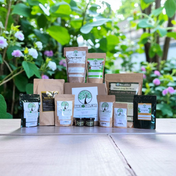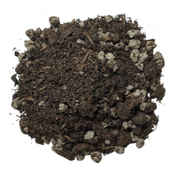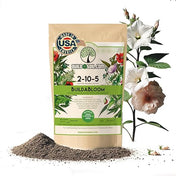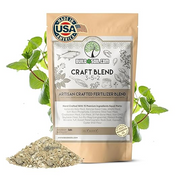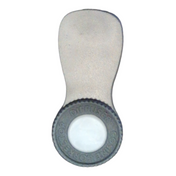Taken from a posting on LivingOrganicSoil.org by "Tree Dogg" Originally From Clackamas Coot.
Life Processes of the Living Seed
by R.G. Stanley & W.L. Butler
"The embryo in a seed draws on its endosperm for the nutrients it needs to germinate and grow. A delicate balance of internal conditions regulates its life processes. The living seed is able to incorporate small molecules and simple substances such as glucose, phosphorus, and sulfurinto complex chemical units of a cell. These organized parts are the cell wall and the protoplasm, which contains the cell nucleus. Enzymes act as the go-between in these conversions and building processes.
The energy for this work comes from the breakdown, or catabolism, of some of the cell's chemical components, usually by combining them with oxygen in the process called respiration. Most of the seed components from which the enzymes of the protoplasm and cell walls form new cells can be classed as proteins, fats, carbohydrates, organic acids, and amino acids. Thus the seed lives as long as its outside environment (against which its seed-coat helps protect it) and internal environment maintain active enzymes and a good balance of chemical substances. Only under these conditions can the embryo, the result of the fusion of the sperm and egg nuclei, produce new cells and a healthy plant.
Moisture, temperature, and gases, particularly carbon dioxide and oxygen, can affect markedly the enzymes and chemical components of the living seed. Fungi, insects, bacteria, chemicals, or light can diminish or destroy the seed's power to germinate. Many of the same factors, in the right concentration or combination, can enhance the life processes of the seed. The water content of the developing seed is similar to that of any actively growing tissue about 70 to 80%. As the seed reaches maturity and the stage at which it is shed from the plant, however, its moisture drops rapidly.
How much water remains at maturity depends on the species of the plant and the environment in which the seed matures. When seeds are artificially extracted from the fruit, their moisture content is affected by the method of extraction and the storage conditions. seeds of the maple, wild rice, and orange illustrate the critical role of the water level in seeds at their time of harvest and during storage. The silver maple (Acer saccharinum) sheds its seeds in June at a moisture content of about 58%. The seed dies if the water content falls below 30%. seeds of sugar maple (Acer saccharum), however, mature in September, contain less than 30% water, and can be air dried to about 5% without lowering germination.
Some seeds, such as wild rice (Zigania aquatica), must actually be stored in water at 32° F. for maximum germination. They lose their ability to germinate if they are exposed to air for a few days. Lela V. Barton, working at the Boyce Thompson Institute of Plant Research, Yonkers, N.Y., showed that citrus seeds stored at room temperature are injured if their high content of water drops. Orange seeds are injured by drying to 25% moisture. Grapefruit seeds became inactive when dried below 51%.
How the external environment in which a seed develops affects its moisture content is illustrated by a study of seed of ponderosa pine. N. T. Mirov, of the U.S. Forest Service, found that seed from trees growing at 2,000 to 3,000 feet contained 18% more moisture than those at 6,000 to 7,000 feet, although he dried all the seeds under the same conditions.
This lower water-holding capacity of seeds from higher elevations supports Nicolai A. Maximov's theory that plant tissues that must survive severe cold usually contain less water than those of warmer climates. The mechanism by which the living seed is protected under such varying conditions of development can be related to their chemical composition. Research at the Boyce Thompson Institute compared seeds high in fat content (pine and peanuts) with those low in fat and high in carbohydrate (tomato and onion). The amount of water held by seeds stored at the same temperature and relative humidity fell as the amount of fat and oil increased. Thus the ability of tissues of a low water content to withstand cold was related to their chemical composition, especially the amount of fat in them.
High temperatures may kill the seed, too. The seeds with a high content of water are less tolerant of high temperatures. Ponderosa pine and Douglas-fir seeds remained viable after heating at 150° F. for 3 hours when they contained only 7% of water. With a water content of 60%, the seeds were rapidly killed by temperatures above 110°. If seeds are stored with a high moisture content, internally produced heat may raise the temperature in the storage container and shorten the lifespan of the seed. This damage, as that from externally applied heat, results from changes in cell metabolism. The breakdown and conversion of chemical components and seed protein by enzymes is made easier by an abundance of water and is accelerated at high temperature.
Although enzymes are present in dry seed, they are activated only on movement of water into the seed. As the temperature increases, the rate of metabolism enzyme activity also increases. One measurable product of this metabolism is the amount of carbon dioxide given off and oxygen taken up. A rapidly metabolizing seed has a higher gas exchange rate than a quiescent seed. If the energy made available by respiration is not used in growth, it is liberated as heat, and the temperature of the stored seed goes up. Water content, one of the most important factors in seed viability, therefore cannot be considered alone.
Variations in water content influence the seed's metabolic activities, including respiration, its temperature, and its ability to germinate. Increasing the amount of water in a seed above 10 to 15% strongly activates the cell enzymes. In stored sunflower and flax seeds, respiration rates increased with increasing water content up to 50%. The temperature inside the seeds increased after the increase in respiration. On heating at temperatures greater than 120°, the living cell protein coagulates irreversibly, just as an egg hardens on heating. If the water content is too high, large amounts of the chemicals required for growth will be used up. The seeds will then be unable to germinate when they are placed under proper conditions.
Removal of too much water from the seed also causes death. The optimal water content of stored seed at 32° to 40° has been determined for most agriculturally important species. The moisture content of the storage container is usually regulated by the use of chemical desiccants, such as calcium chloride or solutions of sulfuric acid, which maintain a constant relative humidity in the closed compartment or storage jar.
To maintain maximum viability, most seeds are stored at a fixed moisture content and at a fixed temperature, usually between 32° and 41°. In this temperature range, water in the seeds does not freeze, but enzyme activities are retarded. Although the optimum storage water content and water-holding capacity may differ in seeds of different species, the universal nature of enzymes controlling metabolism in all living cells establishes the narrow temperature limits. When enzyme activities are drastically reduced at low temperatures, the chemical substrates are preserved in a form essential to maintaining the maximum germinative capacity of the stored seed.
It is possible to store seeds at temperatures below 32° if the water content is low enough. Temperatures as low as minus 320°, the temperature of liquid nitrogen, do not injure wheat embryos with less than 10% of water, but kill embryos containing 50% of water. So far, the technique of storing seeds at very low temperatures is merely an experimental laboratory procedure, which is neither necessary nor economically feasible.
Regardless of storage temperature or moisture content of the seed, as long as the protoplasm remains alive the enzymes continue some chemical activities, and respiratory changes occur. Only the most sensitive instruments can detect these changes. Changes in organic compounds also occur with the uptake of oxygen and release of carbon dioxide in living, but non-growing, seeds. If these seeds are germinated, the rate of respiration increases, and the chemical changes, uptake of oxygen, and release of carbon dioxide are easy to detect.
By following respiratory changes over extended periods in the quiescent seed and comparing them to changes in the early phases of germination, we can compute more precisely the amount of gas exchange in stored seed. The gas atmosphere surrounding mature seeds can determine if the seeds remain alive. If a container of seeds is evacuated and the oxygen pressure is reduced, the seeds keep better than in air. Lack of oxygen retards respiration. Some seeds are short lived in air even at low temperatures. Often they can be kept alive for many years in an atmosphere of nitrogen or hydrogen at temperatures near 40°.
seeds planted too deeply in soil, where little oxygen is present, will not live. As the depth of planting increases, the available oxygen and seed survival decrease. Wet or poorly drained soils also lack oxygen and inhibit the living processes of the seed. Most seeds immersed in water will die unless air is bubbled through the water. A shortage of oxygen usually kills the seed when the temperature or respiration is high. This happens because enzymes need oxygen to produce energy for growth of the embryo. The energy is released when the enzymes combine oxygen with various cell compounds.
Sometimes, however, high levels of oxygen are not required by the living cell to obtain energy from its chemical compounds. Some seeds have an abundance of the anaerobic enzymes, which function without oxygen. These enzymes produce enough energy for certain life processes. Rice seeds (Oryza), for example, do not require much oxygen to function. The cells of the embryo and seedling have a system of anaerobic enzymes and a special kind of respiration that requires little oxygen. seeds of rice, and of a few other plants, therefore can remain viable and germinate under water that contains too little oxygen for the survival of most seeds.
Carbon dioxide, the end product of respiration, also has marked effects on seed viability. If it accumulates inside the seed or in the soil environment surrounding the seed, injury may result. The role of carbon dioxide is difficult to study, because gas concentrations inside and outside the seed may differ widely and the effects vary with the temperature. Research has shown, however, that the activity of most oxidative, energy-releasing enzymes is reduced by high levels of carbon dioxide.
Fifteen years ago this inhibiting effect was thought to be the result of the dissolving of carbon dioxide in the embryo cell sap and higher acidity. We now recognize that living cells have many natural systems for buffering and counteracting such changes. Accumulation of an enzyme product, such as carbon dioxide, in the living cell slows down the enzyme that produces the product. When seeds are stored for a long time, factors that increase the carbon dioxide around them frequently must be controlled to assure maximum viability.
Fungi and bacteria can produce large amounts of carbon dioxide. These micro-organisms commonly occur on and in seeds. They, too, require water to grow, and drying the seed to a low moisture inhibits their activity. Bacteria and fungi also contain enzymes, which metabolize and convert chemical compounds. They usually affect the chemicals on the seed-coat or in the seed.
Through respiration, micro-organisms produce energy, which may raise the temperature and cause the death of the seeds. Grains of stored wheat, for example, often appear to respire at a high rate. Actually, most of the carbon dioxide and heat is produced by micro-organisms growing inside the grain and not by the wheat embryos. Micro-organisms may have many other effects. Some fungi or bacteria produce chemicals that harm the embryo. Some may produce compounds or excrete enzymes that soften the seed-coat, so that air and water diffuse into the seed and hasten its metabolism and loss of viability.
Others may metabolize and exhaust the seed's storage compounds. Old seeds and seeds that are stored under unsuitable conditions of moisture and temperature are particularly susceptible to attack by micro-organisms, usually to the detriment of the seed. The seed-coat therefore often is treated with a chemical disinfectant before it is stored. Certain other chemical compounds inside and outside the seed may affect viability and germinative capacity. By analyzing seeds before and after storage under different conditions, we have detected several compounds that help keep quiescent seeds alive.
Enzymes, such as catalase, peroxidase, and cytochrome oxidase, have been found to be good indexes of seed viability. The activity of respiratory enzymes of this type, which add oxygen to a compound or remove hydrogen from it, is easily determined. A dye is placed on an embryo. If these oxidative-reductive enzymes are active they will add hydrogen to the dye and convert it to another color. Triphenyl tetrazolium chloride is one dye commonly used in this assay. The use of this and other biochemical tests of viability are discussed later.
Unsaturated fatty acids in oily seeds are a good index of viability. When a large percentage of the unsaturated fatty acids are oxidized or saturated with hydrogen, the seeds become rancid, and viability decreases. The ability of seeds of Jeffrey pine to germinate after storage was found to be related to the content of linolenic acid. As this acid is saturated with hydrogen and changed to linoleic or oleic acid, the ability of the stored seed to germinate goes down. The accumulation of citric and malic acids in lentil bean seeds during storage is recognized as beneficial for germination. In cabbage seeds stored at 41°, enzymes convert the soluble sugars to acids. These changes also improved seed viability. If too much carbohydrate and protein are broken down, however, viability is reduced.
Old seeds, which show marked decreases in non-soluble carbohydrate or protein, germinate poorly. The breakdown or coagulation of protein in old seeds may advance so far as to modify the proteinpresent in the nucleus. When that occurs, the seeds usually die. If such seeds do germinate, they frequently produce mutant plants. Corn grown from 5-year-old seeds showed many of the same mutations caused by X-rays and gamma rays.
Thus proper maintenance of the life processes of quiescent seed assures not only maximum viability but also the transmittance of desired characteristics from the parent plant to the offspring. Newly developed analytical techniques and instruments are beginning to clarify the role of such compounds as hormones, inhibitors, and light-sensitive pigments in seeds. The endosperm of some seeds containshormone like substances, which the embryo absorbs during development and germination. Because of the suspected role of hormones in maintaining the viability and stimulating growth, many investigators have added hormone like chemicals to seeds.
Most of the reports on treatment of seeds with synthetic growth substances were published between 1937 and 1946. Of 250 studies surveyed by Willem Kruyt in 1954, only 33% reported positive results. Poor experimental design was the cause of some conflicting reports. Many problems must be considered when we attempt to demonstrate that hormones are essential to seed viability and growth. The seed-coat may act as a physical barrier to the absorption of externally added hormones. The chemical added may be in a form that the seed cannot metabolize. Or the seed may contain sufficient naturalhormone so that added growth substance will not be effective. Although some form of plant hormone probably is involved in germination, its role has not been demonstrated conclusively.
Inhibitors, including many compounds that occur naturally in living seeds, keep the seeds dormant until conditions are favorable for germination. One such compound in tomato fruits prevents premature germination of their seeds. Some seeds contain compounds that enforce dormancy until there is enough water in the soil to leach the inhibitors out of the seed. The concentration of such inhibitors diffusing out of seeds or roots may be great enough to prevent germination if seeds are sown too close together or too close to other plants. But these same inhibitors, reduced to sufficiently low concentration, may stimulate germination. Many of these inhibitors are lactones; parasorbic acid and coumarin are two examples. They apparently prevent germination by inactivating certain enzymes necessary for elongation of the radicle.
Light-Sensitive compounds are studied in the laboratory with a spectrophotometer. Spectroscopic studies have the advantage that they nondestructively follow chemical changes occurring in intact seeds. Cytochrome oxidase and cytochrome c, two light-absorbing enzymes associated with respiration, can be measured in seeds by this technique. These enzymes are oxidized as the seed imbibes water. The higher oxidation state is related to the increase in respiration that occurs during the uptake of water. Spectrometry has also shown that the essential yellow carotene pigments are formed in the cotyledonsof certain legumes before the radicle emerges.
The growth of many seeds and plants is affected by light in the red part of the spectrum. The pigment that mediates these effects was extracted from seeds and in seedlings in 1959 by a group of Department scientists Sterling B. Hendricks, H. W. Siegelman, K. H. Norris, and W. L. Butler.
It is a soluble protein present in cells in very low concentrations. This pigment acts as an enzyme in some reaction so basic to plant development that it controls germination of certain seeds and several other phenomena of the growth and development in plants. The pigment exists in two forms. One absorbs red light with an absorption maximum at wavelength of 660mµ (millimicron). The other absorbs far-red light at a maximum of 730mµ. When the pigment absorbs light in one form, it is converted to the other chemical form.
Many seeds are stimulated to germinate by light. Red light at a wavelength of 660mµ is most effective in promoting germination of lettuce seed. Far-red light, 730mµ, inhibits the stimulating effects of red light. The pigment controls the germination of such light-sensitive seeds by its response to light. Red light puts the pigment in the far-red absorbing form (P730). This change permits germination to proceed. If the red light is followed by far-red light, the pigment is returned to its red-absorbing form (P660), and germination is inhibited. Work with young seedlings and seeds has shown that in the dark the pigment exists in the P660 form. For this reason, germination of those seeds does not occur without light.
The control of germination by the photo-responsive pigment is an example of a cellular mechanism that keeps the seed dormant until conditions for survival are favorable. A light-requiring seed buried deeply in the soil will not germinate until it is uncovered enough to allow light to reach it. It need not be completely bare, however, because only very low light energy is required. Knowledge of the role of this pigment in maintenance of the living seed explains many seemingly unrelated observations.
For example, seeds of birch will not germinate on the forest floor beneath a tree canopy, but they will germinate in an opening that receives direct sunlight. We now recognize a likely reason. Probably the red wavelengths are absorbed out of light filtered through green foliage while far-red, inhibiting light is transmitted.
We have seen that keeping seeds alive requires the consideration of many important physical and chemical factors. Details of the changes of simple organic constituents and respiratory processes of quiescent seeds have long been known. Information about complex organic compounds and seed hormones is just unfolding. Other information and an understanding of facts already known must be sought. We know enough about the manipulation of storage environments to minimize undesirable changes in most seeds for one or several years. Yet many so-called short-lived seeds do not retain their viability even under the best known procedures. Perhaps the new research techniques and hypotheses will provide better ways to lengthen the lifespan and increase the germinative ability of the living seed."

